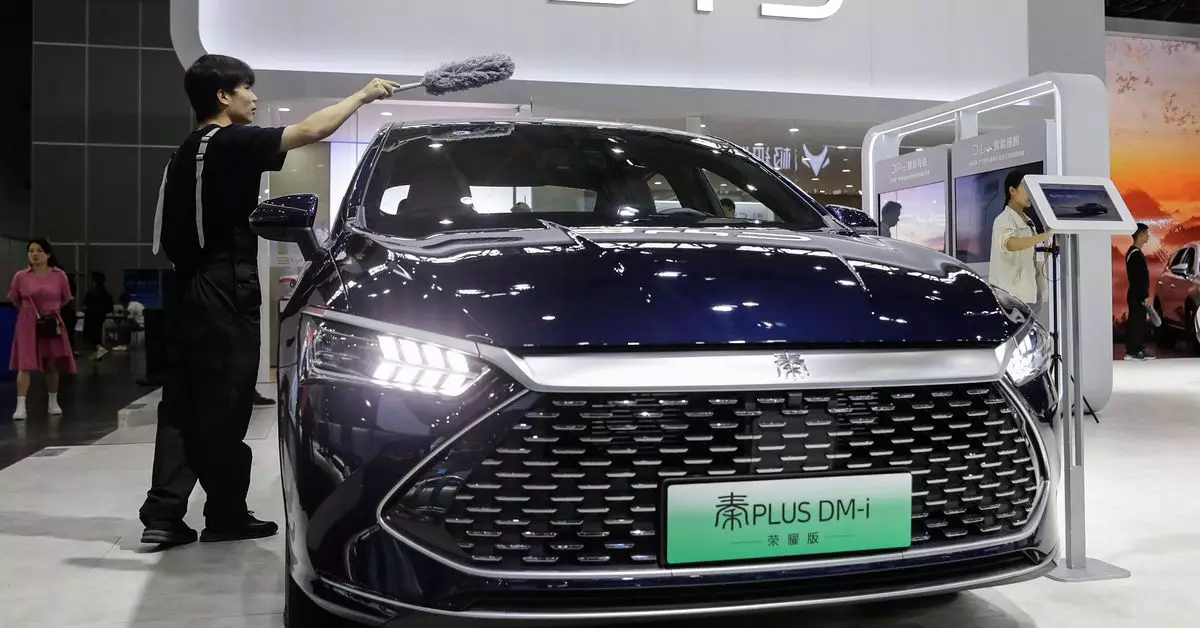In a significant regulatory shift, the Biden administration has proposed new rules that would effectively ban the sale and import of connected vehicle software and hardware originating from what are termed “countries of concern,” primarily targeting China. This move has emerged from escalating tensions between the United States and China, particularly with respect to national security concerns related to connected vehicles. The proposed regulations aim to mitigate risks associated with potential sabotage and surveillance capabilities that could be facilitated by Chinese technology integrated into vehicles.
The specifics of these rules encompass all components that enable vehicle connectivity, including Bluetooth, Wi-Fi, and cellular technologies, as well as onboard sensors and cameras. The White House has characterized these technological vulnerabilities as acute threats, suggesting that the risks extend beyond mere economic competition to fundamental issues of national safety and security.
These proposed ban rules are set against the backdrop of an increasing pressure on U.S. manufacturers, who face the challenging prospect of removing Chinese-made components from their vehicles within the next several years. This would represent a significant shift in the automotive supply chain, which has increasingly relied on global sourcing—often involving Chinese technology and parts. The administration’s regulations could potentially disrupt production timelines and complicate relationships with suppliers that provide necessary components for vehicle manufacturing.
Furthermore, the rules also come at a time when American automakers are grappling with competition from Chinese manufacturers, particularly in the electric vehicle (EV) sector. China is now regarded as the world’s leading auto exporter, and the country’s advancements in affordable EV technology pose a direct challenge to U.S. efforts in the same space. For instance, the BYD Seagull has emerged as a top seller in China, priced at approximately $10,000 and boasting respectable performance metrics, thereby presenting a daunting challenge for U.S. competitors who are still struggling to produce comparable models at similar price points.
The ongoing conflict between the U.S. and China is further underscored by the introduction of new tariffs, including a striking 100 percent duty on electric vehicles imported from China. This aggressive tariff strategy adds another layer of complexity to the automotive market, effectively pricing Chinese models out of the U.S. market, while raising costs for consumers domestically. The auto industry is undoubtedly adjusting to these rising trade barriers, with executives expressing concerns over the long-term implications on market competitiveness.
Tesla’s CEO, Elon Musk, has been vocal in his stance, initially warning that unrestricted Chinese imports could “demolish” the domestic auto industry, a position that shifts to caution against harmful tariffs—suggesting the complexities inherent in navigating both competition and collaboration in a global marketplace. Such contradictions highlight the challenge of maintaining a robust domestic industry while simultaneously managing an increasingly globalized supply chain ethos.
As the U.S. automotive landscape evolves, one of the critical factors will be how these regulations and tariffs reshape vehicle development and innovation. The cutoff timeline set for model year 2027 for software and 2030 for hardware presents manufacturers with a narrow window to adapt. The proposed measures could also effectively sync with incentive structures already in place for electric vehicles, wherein credits are limited to those not reliant on Chinese battery components.
The Autonomous Vehicle Industry Association has reinforced the administration’s stance, underscoring that national security considerations must be paramount. However, it is also crucial to acknowledge that stifling competition even under the guise of security could inadvertently curtail innovation within the domestic market.
Overall, these proposed regulations appear to be set against a broader geopolitical chess game, with implications that extend beyond mere automotive competition. The intersection of national security and economic strategy is becoming increasingly pronounced, leaving stakeholders to ponder the true cost of ensuring safety while attempting to retain a competitive edge in a rapidly evolving automotive environment. The coming years will be critical in determining whether these rules will fortify U.S. auto manufacturing or inhibit its global standing.

